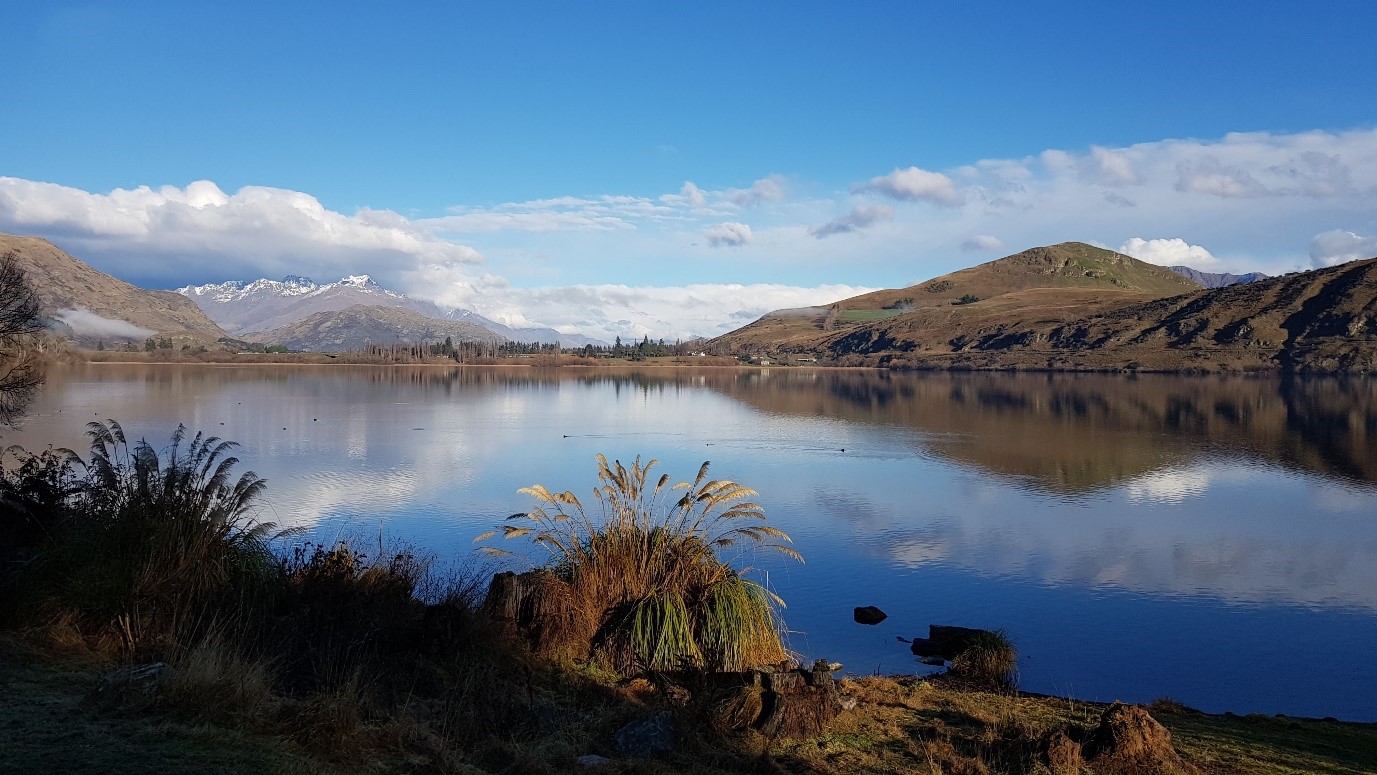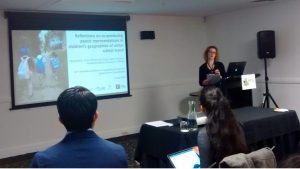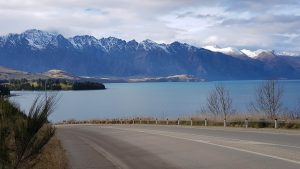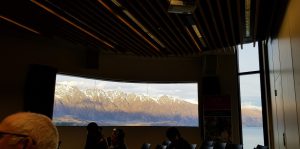
July 25, 2019, by lzzeb
Medical Geography in a Magical Place
A blog by Dr Stephanie Coen
Queenstown, Aotearoa New Zealand is hands-down the most magical place in which I have ever attended an academic conference. The scenery is otherworldly, with ruggedly steep snow-capped mountains dropping straight into the brilliant blue Lake Wakatipu. The photo below of my daily walk from my accommodation to the conference venue is but an incomplete snapshot of the awesomeness of this place. I feel very fortunate to have been able to attend the 18th International Medical Geography Symposium (IMGS) with support from the School of Geography and the University’s International Collaboration Fund, which supported my capacity of meet with colleagues at the University of Otago following the conference.
It was high time the IMGS came to Aotearoa New Zealand. Ever since it’s founding in 1985 (when it was held at Nottingham!) the biannual meeting has circulated primarily among the UK and North America, despite the field of medical/health geography including a vibrant and highly influential group of New Zealand scholars. It was excellent to see how our UK and North American colleagues reciprocated and turned up in great numbers (over 200 participants) for our New Zealand hosts.
One of the most special elements of the conference was the centring of Māori knowledges and traditions in all aspects of conference activities. The conference began with a mihi whakatau (formal Māori welcome) which introduced us to the geographical and spiritual features of Queenstown; all conference attendees participated in singing a Māori thank you song to presenters after each plenary; and the first plenary was dedicated to Māori perspectives. We were also treated a Haka performance by local high schoolers at the conference banquet.
IMGS is my favourite conference because it is the only forum dedicated solely to medical/health geography, and people truly participate – and by this I mean all of the sessions are always well-attended. You never run into the unfortunate circumstance of presenting to a near-empty room. The community is invested in the meeting, and this makes for high calibre content. One of the most interesting sessions I attended was a practically-focused session on working with policy-makers and practitioners. It was fascinating to learn about different initiatives in our health geography community to bridge gaps between research and action, and some of the issues our colleagues are grappling with. There was also a panel session and a plenary talk (by Gavin Andrews) dedicated to thinking about the “post-human turn” in health geography that raised a number of questions for me about how I might engage with this line of theorising in my work.

Presenting our paper “Reflections on co-producing poetic representations in children’s geographies of active school travel” at the International Medical Geography Symposium.
My own presentation was part of a session on “Understanding place through qualitative innovations” and focused on sharing some of our work using co-produced poetry with children in Canada to understand and communicate about issues related to active school travel. This is a methodological paper (with co-authors Christina Ergler, Kate Schieman, Katherine Wilson, and Jason Gilliland) in which we reflect on the poetic co-production process and the implications of using poetic representations of children’s experiences to generate impact in community active school travel agendas.
One of the best parts of the IMGS is the opportunities the conference offers to connect with new and ongoing collaborators. At the meeting, I was able to meet with colleagues from Canada and New Zealand in person and cement our plans for submitting a proposal for an edited book (stay tuned for more on that!). IMGS also has a tradition of a conference field trip and most everyone goes. This means that you could even sit next to one of your health geography heroes on the field trip bus (which I just might have done, but not naming names!).
The next IMGS in 2021 will be back in the UK in Edinburgh and I’m already looking forward it.
No comments yet, fill out a comment to be the first



Leave a Reply